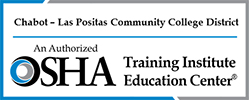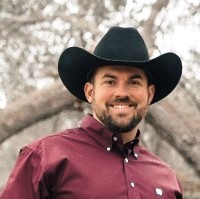During a recent interview with Richard Chapman, who currently serves as an Agriculture Engineering Instructor at Hartnell College, it quickly became clear that raising safety awareness in his students is an integral part of his approach to teaching. In fact, becoming an OSHA Outreach Trainer last summer was a logical next step to enhance a career in which he has always incorporated safety principles into his curriculum.
Richard credits his participation in the Future Farmers of America when he was in high school with starting him on the road of safety awareness. As he points out, FFA participants not only receive leadership, personal growth and career training through competitions and career development events, but also learn about agricultural health and safety from their FFA advisors, who counsel and instruct participants in a wide range of agriculture-related subjects, including livestock, chemical and tractor safety. This grounding in safety and health has stayed with Richard and guided his instructional methods ever since.
After earning a BA followed by a teaching credential in 2013, Richard taught high school for the next eight years, in subjects such as welding and woodworking. As he says, he took a very practical approach to integrating safety with his students, always starting classes with specific safety instructions, including how to carefully prepare for a project, handle tools safely, know when and how to use PPE, and how to clean up work areas at the end of each class. Richard felt that whatever his students did after graduation, they would benefit from a safety mindset both at work and at home. He estimates that he taught over a thousand high school students, with only two relatively minor injuries in eight years, a noteworthy record considering the challenges of keeping high school-age students focused and engaged.
Richard earned his MA in Agriculture Education in 2018 at California Polytechnic State University, and in January 2021 joined the Agriculture Engineering department at Hartnell College as an instructor in Manufacturing Technology. Richard’s curriculum is built around an innovative program called Mechatronics, a combination of mechanics and electronics that focuses on electronically controlled mechanical systems such as robotics and sensors. The adoption of more sophisticated automation in the agriculture industry means that more workers who are trained to manage these new systems will be needed. Students who complete the program and earn their AA degree will be qualified to step into such roles as maintenance technicians, while students who transfer to a 4-year college and earn an engineering degree will qualify for positions such as technical supervisor.
As the agriculture industry embraces more technically complex automation to make farm to table processes more efficient, Richard is addressing the complex safety issues that accompany automation by making safety a central feature of his college curriculum. Since he is certified as a Craft Instructor by the National Center for Construction Education & Research as well as an authorized OSHA Outreach Trainer, he starts his students off with a combined NCCER Core Course with the OSHA 10-Hour Outreach Training for General Industry, supplemented by fall protection, to establish a strong safety orientation in his students. This semester he is offering the OSHA 30-Hour Outreach Training in General Industry in 2-hour segments to, as he says, give his students a good safety foundation.
Richard is excited to talk about his goals and plans regarding safety. His immediate objective is to explore more ways to incorporate the OSHA 10-Hour and 30-Hour Outreach Training into his curriculum. Drawing on his Future Farmers of America roots, he will be a judge at local FFA competitions and participate in the Salinas Valley Fair, which will give him an opportunity to raise safety awareness among young people who may be future agriculture industry workers. He is also exploring the opportunity to offer OSHA 10-Hour Outreach Training to companies through Hartnell College, on a non-credit, no fee basis.
As the agriculture industry becomes more automated, Richard is not only focused on training future workers on hazard prevention, but also asking the question, “What are potential new hazards that we haven’t thought of yet?” He cites as an example a new automated tractor used for weeding, which can distinguish crops from weeds and then shoot the weeds with lasers. What kind of safety precautions will be needed to protect workers from lasers? He also mentioned a recent visit to a packing facility where he observed four giant robots palletizing and staging the fruit for packing. How will workers be trained to program and operate robots while avoiding injury or worse as they work side by side with this new mechanized technology? These are the kinds of issues that Richard Chapman wants to address as he helps prepare the next generation of workers who will produce our food while keeping themselves and their fellow workers safe.

